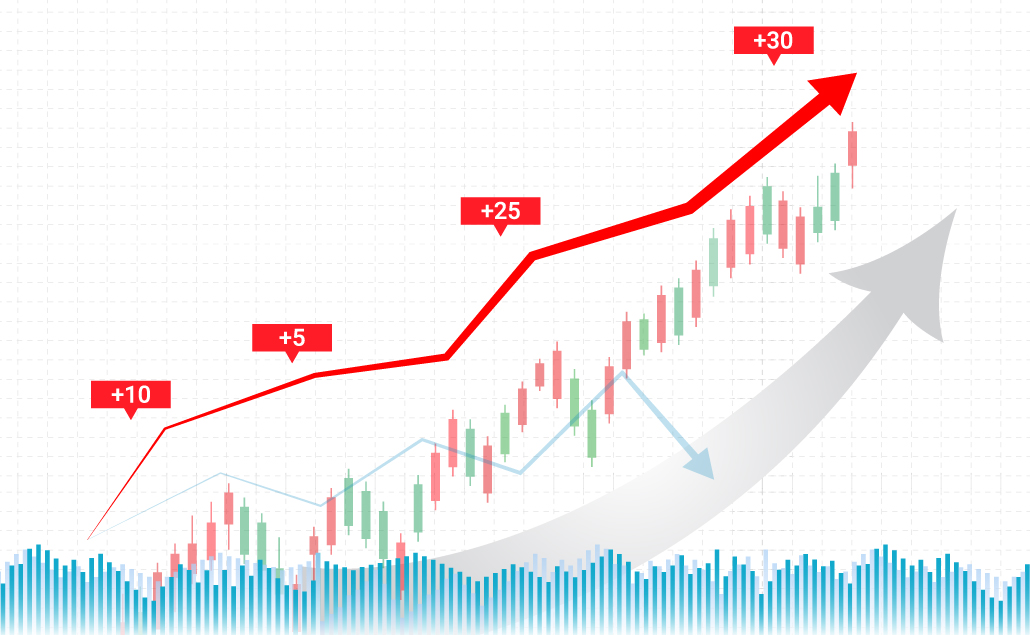Volume is a term that is used a lot when it comes to investing, but what does it mean for traders? It is an indicator of how many shares of a stock are being bought and sold in a given time period. Anytime a share of a stock is bought, it also must be sold by a seller as there are a finite number of physical shares. In terms of CFD trading, volume is a reference to how many contracts are bought and sold since no physical shares are held by any buyer or seller. In this way, CFD trading volume numbers are not always representative of how the underlying stock is trading.
Volume is related to price movements and liquidity for physical stocks. When trading volume is low, the stock is less liquid and price movements tend to be less volatile. The opposite is true when trading volume is higher. Daily average trading volume is often used in technical analysis and can be used to tell us how significant a market move is for that underlying asset and where potential entry and exit points are optimal.
Stock Volume Example
Volumes in stocks are quite simple to use in analyzing physical stocks since you can easily compare trading volume from session to session. You can even take an average daily trading volume from each day over a given period of time like the past 30 days. Let’s say a stock has a daily average trading volume of 50 million shares. During yesterday’s session, that stock gained 10% and saw a daily trading volume of 80 million shares. We can deduce that the higher trading volume was bullish as the stock gained 10%, and that investors were buying shares, perhaps from an announcement from the company.
In CFD trading, volume is calculated in very much the same way except it is the number of CFD contracts that changes hands not physical shares. The CFD contracts are not included in the daily trading volume of the stock, as CFD trading speculates on the price difference from an entry and exit position, rather than the actual stock price movement.
What Can you Understand from Volume?
Volume is an excellent indicator of market interest in that particular stock. For example, during the short squeeze of meme stocks like GameStop (NYSE:GME) and AMC (NYSE:AMC), we saw record levels of daily average trading volume. An incredibly large amount of shares were changing hands throughout those sessions, which is why we witnessed such large gains and drops in those stock prices.
In technical analysis, stocks volumes are a great way to know at what price levels people are holding shares at. This is often called a volume shelf on technical analysis charts, and can indicate upcoming volatility. If a stock sees high volume until it hits $100.00 per share and then the volume drops off, we can assume that there are a lot of people holding the stock at that $100.00 price level. If the stock price falls, we know the volume will once again pick up if the stock goes back to $100.00 since those people will most likely be holding their shares and waiting for the price to return.
What Can’t you Understand from Volume?
Volume is a past performance indicator and is generally not indicative of what will happen in the future aside from the volume shelves mentioned in the previous section. In CFD trading, contract volume can tell us how many contracts are traded, but it doesn’t illustrate how many traders are actually interested in the stock. For example, if 500 CFDs change hands, we don’t know if it was five traders trading 100 CFDs or one trader trading 500 CFDs. Since the price of the CFD does not rise or fall like the underlying stock price does, it’s not a great indicator of how interested the market is in that stock.
How to Calculate Volume?
Trading volume is quite simple to calculate as it is quite literally just the number of physical shares that changed hands over a specified period. Volume is usually calculated per day and then per short-term period like 30-days to get the average per session. For CFDs, it is the total number of CFDs that are bought or sold on that day. One CFD contract is equal to one physical share, so once again it is quite simple to calculate CFD trading volume.
What is a Volume Chart?
Volume charts are exactly as they sound: charts that give us a visual of trading volume for a particular asset. A volume price trend indicator chart or VPT is often used in technical analysis as a comparison of how the stock’s price moved given the different levels of daily trading volume. These are used by traders to determine exit and entry points, as well as charting areas of support and resistance.
What are the Indicators of Volume?
There are several indications of high trading volumes for a stock. The single best giveaway that a stock is experiencing higher than average trading volume is that the stock is making a large price move in one direction or the other. When trading CFDs, you may notice the price fluctuations in the underlying asset, which will have a direct effect on your potential profit or loss. Using volume in technical analysis can give CFD traders an idea of at what levels large price movements will happen again, and when there may be some consolidation.
Disclaimer
Eurotrader doesn’t represent that the material provided here is accurate, current or complete, and therefore shouldn’t be relied upon as such. The information provided here, whether from a third party or not, isn’t to be considered as a recommendation; or an offer to buy or sell; or the solicitation of an offer to buy or sell any security, financial product or instrument; or to participate in any particular trading strategy. We advise any readers of this content to seek their own advice.


